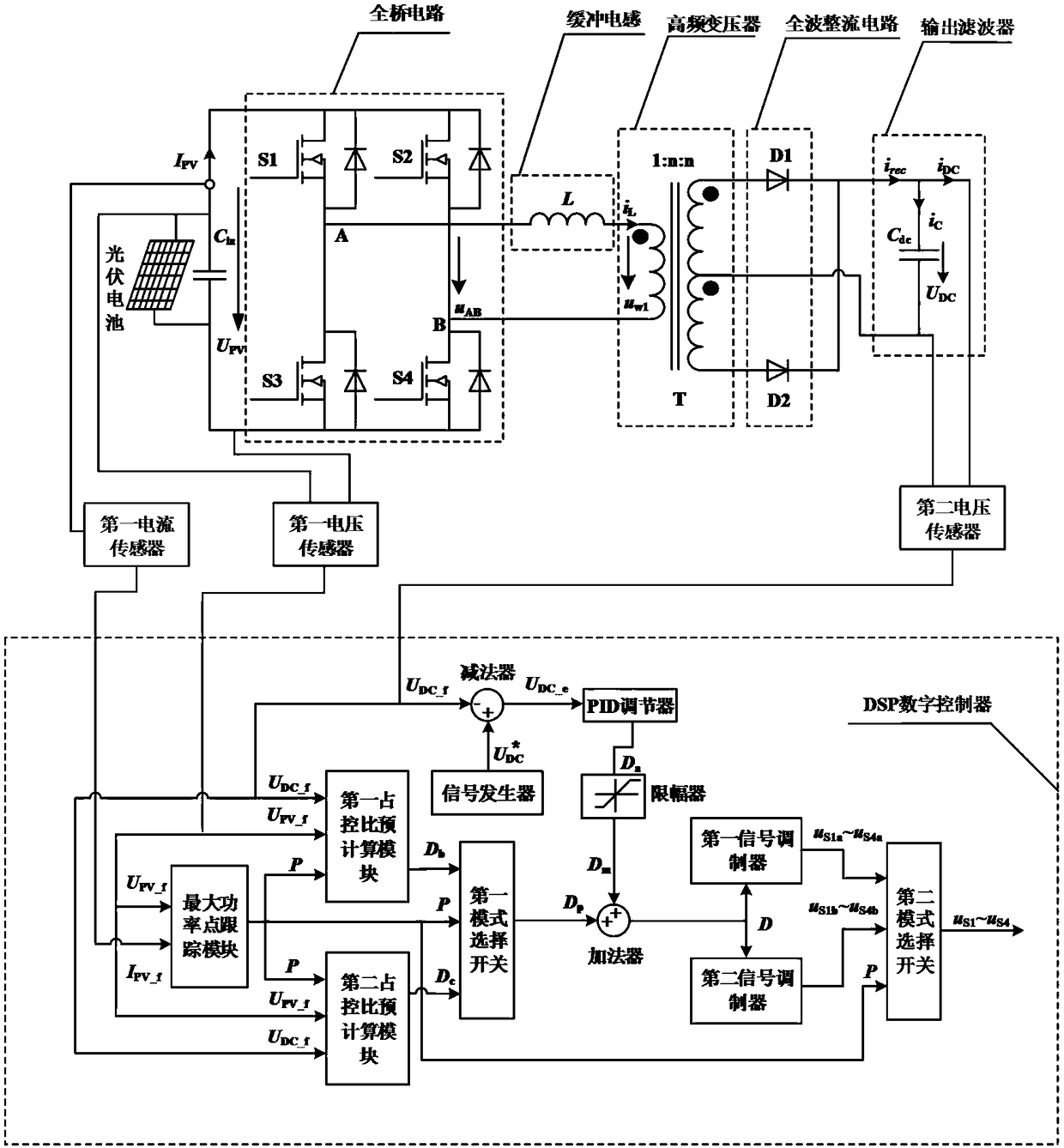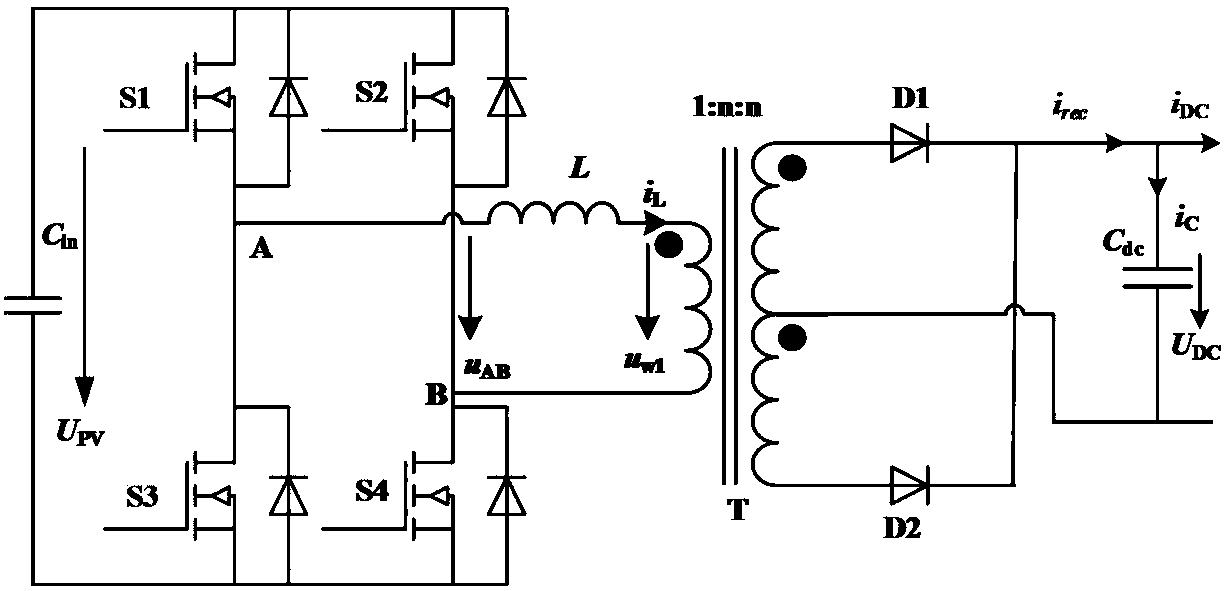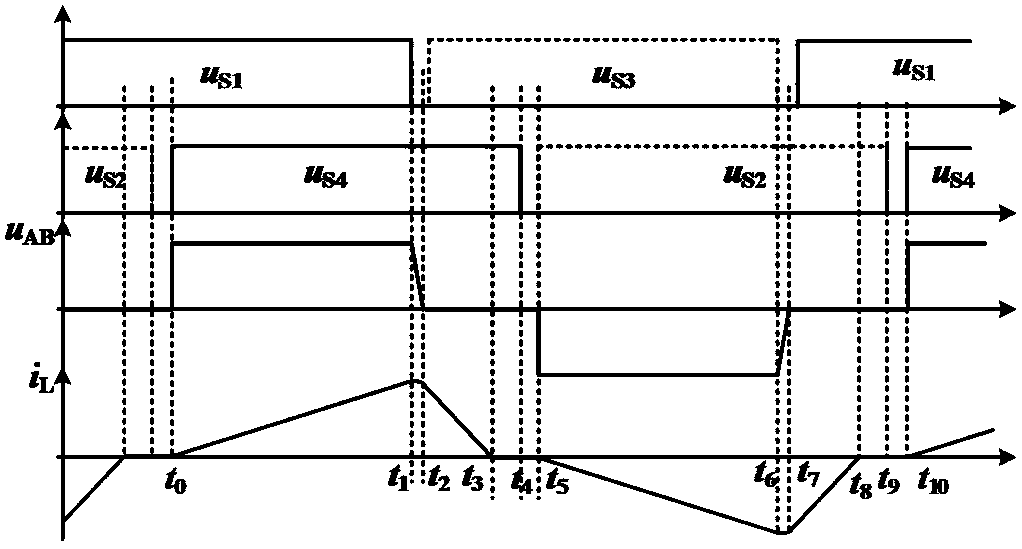Flexible Topological Converter and Its Digital Control Device Applied to Photovoltaic Micro-inverter
A micro-inverter and flexible topology technology, applied in the direction of output power conversion devices, photovoltaic modules, photovoltaic power generation, etc., can solve the problems of increasing circuit complexity, complex circuit structure, diode parasitic oscillation and reverse recovery loss, etc. Achieve the effect of eliminating reverse recovery loss, high-efficiency transmission, and realizing transmission
- Summary
- Abstract
- Description
- Claims
- Application Information
AI Technical Summary
Problems solved by technology
Method used
Image
Examples
Embodiment Construction
[0021] Below in conjunction with specific embodiments, the present invention will be further illustrated, and it should be understood that these embodiments are only used to illustrate the present invention and not to limit the scope of the present invention. The modifications all fall within the scope defined by the appended claims of this application.
[0022] like figure 1 As shown, a flexible topology converter applied to a photovoltaic micro-inverter includes an input filter capacitor C in , full bridge circuit, buffer inductor L, high frequency transformer T, full wave rectifier circuit and output filter C dc , and its interconnection relationship and components will be described in detail below.
[0023] The full-bridge circuit uses photovoltaic cells as the input power supply, and includes a first switch S1, a second switch S2, a third switch S3, and a fourth switch S4 with anti-parallel diodes; the source of S1 and the drain of S3 Connection, drain of S1, drain of ...
PUM
 Login to View More
Login to View More Abstract
Description
Claims
Application Information
 Login to View More
Login to View More - R&D
- Intellectual Property
- Life Sciences
- Materials
- Tech Scout
- Unparalleled Data Quality
- Higher Quality Content
- 60% Fewer Hallucinations
Browse by: Latest US Patents, China's latest patents, Technical Efficacy Thesaurus, Application Domain, Technology Topic, Popular Technical Reports.
© 2025 PatSnap. All rights reserved.Legal|Privacy policy|Modern Slavery Act Transparency Statement|Sitemap|About US| Contact US: help@patsnap.com



